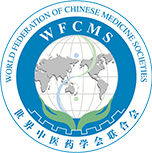126 drugs added to national basic cover
China will add 126 drugs to a revised national basic medical insurance list, with a focus on novel medications and rare disease therapies, the National Healthcare Security Administration said on Wednesday.
Newly added products will include 21 anti-cancer drugs, 17 antivirals or anti-COVID medicines, 15 drugs for treating diabetes, mental disorders, rheumatism and other chronic diseases, and 15 drugs targeting rare diseases, the administration said at a news conference.
One drug will be removed from the list as it is about to be taken off the market, according to the administration.
The new list, which will come into effect on Jan 1, will include 3,088 drugs in total.
Among the newly included drugs, 121 are being added after successful negotiations with manufacturers, with their prices cut on average by 61.7 percent.
Patients are expected to save 40 billion yuan ($5.6 billion) in the next two years thanks to price negotiations and reimbursement policies, according to the administration.
Huang Xinyu, head of the administration's medical services management department, said that the national insurance drug list has been updated each of the past six years, with 744 drugs added during that period.
The proportion of added new drugs — those making the list within five years after gaining market approval — during each adjustment has risen from 32 percent in 2019 to 97.6 percent, he said.
Chen Wen, a public health professor at Fudan University in Shanghai and head of an expert panel with the administration, said that the majority of drugs that underwent talks with producers before being included in the list are drugs that were launched onto the market only recently and are highly demanded in clinical treatment.
"A large number of novel drugs that are developed through identifying new targets or employing a new mechanism have also been added," he said.
The latest list includes 23 novel drugs that were added after negotiations with drugmakers. Among them is dorzagliatin, a novel oral drug to treat diabetes developed by Hua Medicine, a company based in Shanghai, the administration said.
Meanwhile, 15 drugs that can treat 16 types of rare diseases have been included. There were no drugs for 10 of these rare diseases before the latest adjustment.
"Medications for diseases that have been a great concern for years, such as Gaucher's disease and myasthenia gravis have been included," said the administration. "It is estimated that adding these rare disease drugs would benefit nearly 10,000 patients."
Gaucher's disease, a genetic condition linked to a missing enzyme in the blood, can cause enlargement of the liver and spleen, anemia, bone pain and fractures.
Myasthenia gravis is caused by an abnormal immune reaction and weakens muscles in different parts of the body. An estimated 170,000 people in China are diagnosed with the disease.
Vyvgart, an injectable solution to treat some adult patients with myasthenia gravis, gained market approval from China's top drug regulator in June and became available on the market in September.
Zhao Chongbo, a neurologist at Huashan Hospital affiliated to Fudan University in Shanghai, said that it takes less than half a year for a drug to get on the insurance list after hitting the shelves in China.
"It shows the country's great support for the development of novel drugs that are in acute need and the country's attention paid to rare disease patients," he said.

